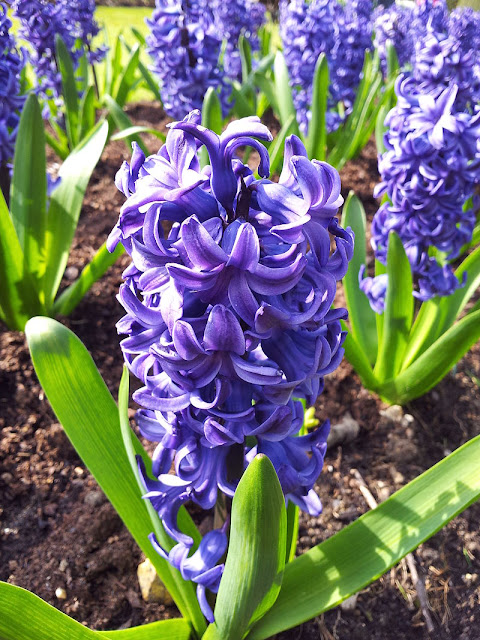 |
| How to plant and grow hyacinths |
These stunning bulbs are believed to have been first brought into cultivation by the ancient Greeks. In fact the word hyacinth originates from the word ‘Hyakinthos’. In ancient Greek mythology, this was the name of a handsome young Spartan prince who was loved by the gods Apollo and Zephyrus.
 |
| How to plant and grow hyacinths |
Enter your local bulb retailer during the autumn months and you will find a selection of loose and pre-packed hyacinth bulbs, but be careful what you choose as they will be available in two distinct conditions. Those that have been ‘prepared’ and are suitable for indoor flowering and those which have not been prepared and therefore better suited for planting outdoors as spring flowering bulbs.
Prepared hyacinth bulbs are special because they have undergone a sequence of cold temperature treatments used to encourage flower initiation. If they are planted indoors by the end of October then they should be flowering in time for Christmas.
 |
| How to plant and grow hyacinths |
As a rule, different hyacinth bulb colours will flower at different times and so it generally best to keep the same varieties to each container. Plant them with the nose of the bulb sitting above the soil level by about an inch, then top off the compost with a layer of gravel of decorative grit to act as a drying mulch. Move your finished container to either a cool shed or leave outside with a weighted bucket over the top in order to exclude light and damage from pests like squirrels. After a couple of months, fat buds will begin to appear and at this point they would need to be brought back inside to a cool bright room, near a windowsill. They should reach full bloom in just three weeks time!
For untreated hyacinth bulbs it's best to plant them outside, in a sunny site and preferably into a free-draining soil. You may wish to mix in a good bulb fertilizer first, but if your soil is acidic, you can add a little lime. Plant them between 5 and 6 inches in depth and approximately 5 inches apart. Avoid areas that are too damp as these bulbs can be susceptible to rotting. You will find that Hyacinth bulbs are self propagating producing smaller bulbs at the bottom of your parent plants. These can be removed and replanted every year to maintain your displays. Once the flower has finished, you can remove the stems, but you may wish to leave the foliage, allowing the bulb to absorb the nutrients providing a stronger display next years.
In text image credit - John O'Neill Hyacinths - floriade canberra CC BY-SA 3.0
In text image - By The wub - Own work, CC BY-SA 3.0, https://commons.wikimedia.org/w/index.php?curid=20184777
For related articles click onto the following links:







No comments:
Post a Comment